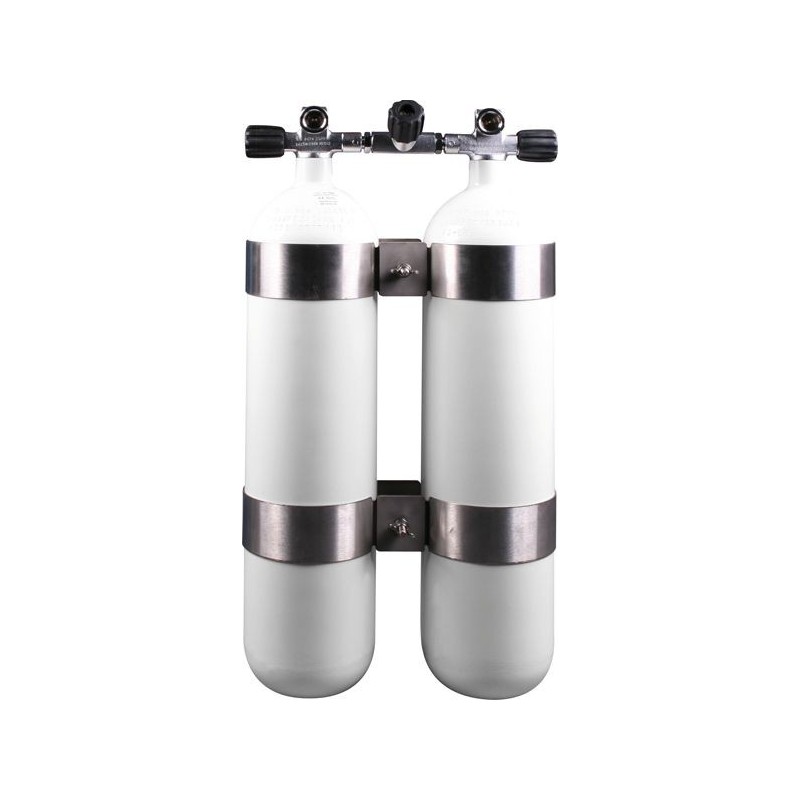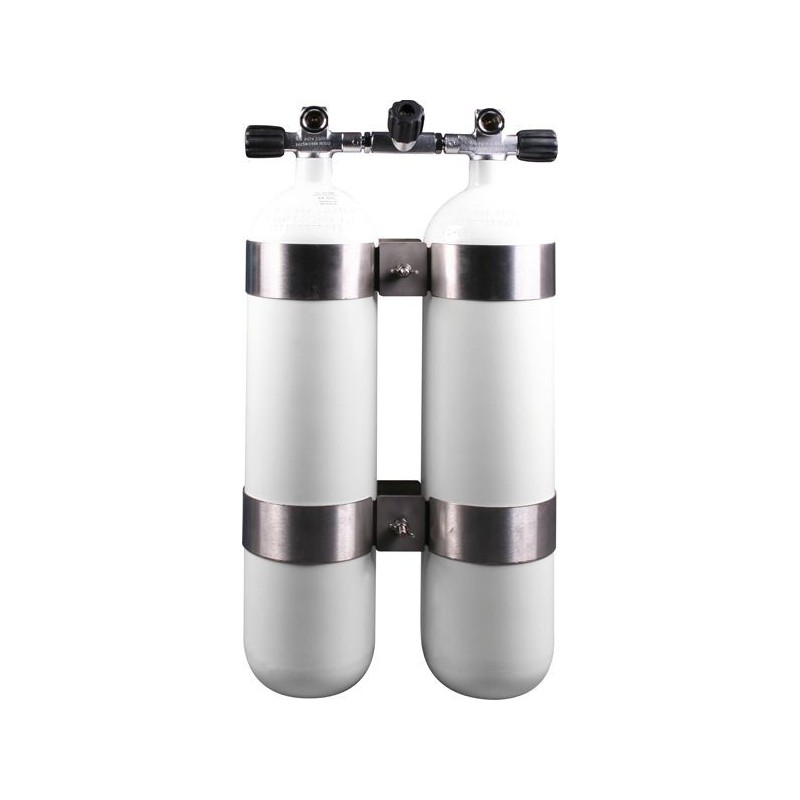My experience is that a tank (large or small, it does not matter) is hardly welcome onboard an aircraft. They start complaining of so many issues, and charging absurd additional costs, requiring the valve to be removed, etc.
It is easier and cheaper to leave it at home.
Depending on the location and dive op, you can arrange other solutions, such as two small tanks in side mount, a compact twin tank (my preferred) or a single large tank with dual valves and possibly with reserve. The latter has been what I managed to obtain more often, here in the Mediterranean the standard tank is a 15 liters steel tank with double valves (DIN convertible), which provides plenty of gas and a reasonably good redundancy.
Two full size tanks are definitely too bulky and too heavy also for me! That cannot be a solution for recreational diving...
Please note that the compact 7+7 liters twin tanks I am recommending are more compact, more streamlined and much more practical than a standard single tank. They have nothing to do with the large twin tanks used by so-called "technical" divers.
Something like this:
DOUBLE TANK 7 + 7 LT 232 DIR STYLE STANDARD EUROCYLINDER IN STEEL ROUND BOTTOM

www.momodive.it


www.momodive.it



